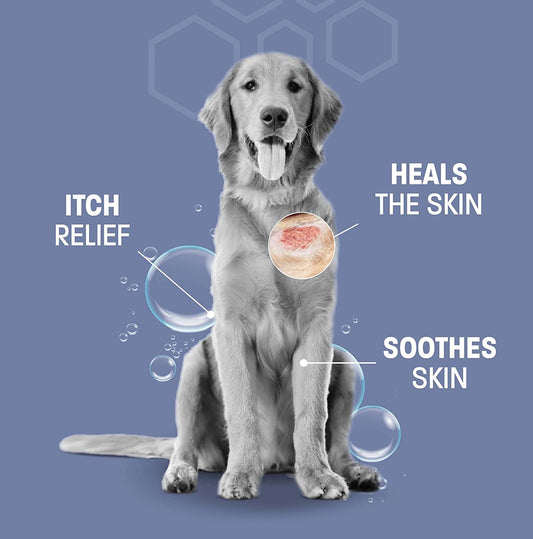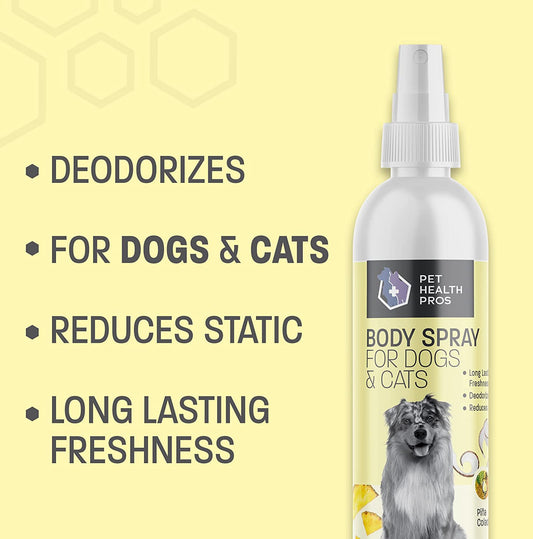Keeping your dog's ears healthy is very important. Ear problems can cause pain and make your dog unhappy. Using dog ear drops can help fix these problems and keep your dog's ears in good shape. This article will explain the benefits of dog ear drops and how to use them correctly.
Key Takeaways
- Dog ear drops can quickly relieve discomfort and pain in your dog's ears.
- There are different types of ear drops, including medicated and natural ones.
- It's important to prepare your dog properly before applying ear drops.
- Using ear drops can prevent infections and improve your dog's overall ear health.
- Always consult your vet before starting any new ear drop treatment for your dog.
Understanding Dog Ear Health
Common Ear Problems in Dogs
Dogs can suffer from various ear issues, such as infections, mites, and allergies. Ear infections are often caused by bacteria or yeast and can lead to discomfort and pain. Ear mites are tiny parasites that can cause intense itching and irritation. Allergies, whether from food or the environment, can also affect your dog's ears, leading to inflammation and redness.
Signs Your Dog Needs Ear Drops
It's important to recognize the signs that your dog may need ear drops. These can include excessive scratching at the ears, head shaking, and a foul odor coming from the ears. You might also notice redness, swelling, or discharge. If your dog is showing any of these symptoms, it's time to consider ear drops as a treatment option.
Preventative Measures for Ear Health
To keep your dog's ears healthy, regular cleaning is essential. Use a vet-approved ear cleaner and gently clean your dog's ears once a week. Additionally, keep your dog's ears dry, especially after baths or swimming, to prevent infections. Regular check-ups with your vet can also help catch any potential issues early on. A balanced diet and proper grooming can further support your dog's ear health.
Maintaining your dog's ear health is crucial for their overall well-being. By staying vigilant and taking preventative measures, you can help your furry friend avoid painful ear problems.
Types of Dog Ear Drops
Medicated Ear Drops
Medicated ear drops are specially formulated to treat specific ear conditions in dogs. These drops often contain antibiotics, antifungals, or anti-inflammatory agents to address infections, yeast overgrowth, or inflammation. It's crucial to follow your veterinarian's instructions when using medicated ear drops to ensure effective treatment and avoid potential side effects.
Natural Ear Drops
Natural ear drops are made from herbal and organic ingredients. They can be a gentle alternative for maintaining ear health and addressing minor issues. Common ingredients include tea tree oil, aloe vera, and chamomile. While natural ear drops can be effective, it's important to recognize the signs of more serious conditions that may require medical treatment.
Choosing the Right Ear Drops for Your Dog
Selecting the appropriate ear drops for your dog depends on their specific needs and health conditions. Consult your veterinarian to determine whether medicated or natural ear drops are best. Consider factors such as the severity of the ear problem, your dog's medical history, and any potential allergies. Always read the product label and follow the recommended dosage and application instructions.
Using the right ear drops can help maintain ear health and prevent future issues. Regular check-ups with your vet are essential to ensure your dog's ears stay healthy and free from infections.
How to Properly Administer Dog Ear Drops
Preparing Your Dog for Ear Drops
Before you start, make sure your dog is calm and comfortable. You might want to have some treats handy to reward them. Cleaning a dog’s ears to prevent yeast build-up is a good first step. Use a gentle ear cleaner and cotton ball to wipe away any dirt or wax. This helps the ear drops work better.
Step-by-Step Application Guide
- Hold your dog still. You might need someone to help you with this.
- Gently lift your dog's ear flap to expose the ear canal.
- Place the tip of the ear drop bottle just above the ear canal. Be careful not to touch the ear with the bottle to keep it clean.
- Squeeze the right amount of drops into the ear canal.
- Massage the base of the ear for a few seconds to help the drops go deeper.
- Let your dog shake its head to get rid of extra liquid.
Post-Application Care
After applying the ear drops, keep an eye on your dog for a while. Make sure they don't scratch or rub their ears too much. If they seem uncomfortable, it might be a good idea to check with your vet. Regular grooming and inspection can help keep your dog's ears healthy and prevent problems in the future.
Proper ear care is essential for your pet's wellbeing. Regular cleaning and using ear drops as needed can prevent many common ear issues.
Benefits of Using Dog Ear Drops
Immediate Relief from Discomfort
Dog ear drops can provide immediate relief from itching, redness, and swelling. This can make your dog feel better quickly and stop them from scratching or shaking their head too much.
Prevention of Infections
Using ear drops regularly can help in preventing recurrence of ear infections. This ensures your dog's ears stay yeast-free. It's important to inspect, clean, remove hair, dry, and schedule vet check-ups to keep their ears healthy.
Improved Overall Ear Health
Regular use of ear drops can lead to improved overall ear health. Healthy ears mean your dog will be happier and more comfortable. Keeping their ears clean and free from infections is key to their well-being.
Regular ear care can prevent many common ear problems in dogs. Make it a part of your routine to ensure your pet's ears stay healthy and infection-free.
Safety Tips and Precautions
Consulting Your Veterinarian
Before using any ear drops, consult your veterinarian. They can help you choose the right product and ensure it's safe for your dog. This step is crucial to avoid any adverse reactions or ineffective treatments.
Avoiding Common Mistakes
When using ear drops, avoid common mistakes like using too much product or not cleaning the ears properly beforehand. Using Otizole ear drops correctly is crucial for effective treatment. Always follow the instructions on the label and your vet's advice.
Monitoring Your Dog's Reaction
After applying ear drops, keep an eye on your dog's reaction. Look for signs of discomfort or adverse reactions, such as redness or swelling. If you notice any of these symptoms, stop using the product and consult your vet immediately.
Always prioritize your dog's comfort and safety when administering ear drops. Proper care can prevent complications and ensure effective treatment.
When to Seek Professional Help
Persistent Symptoms
If your dog's ear problems don't get better after using ear drops, it might be time to see a vet. Long-lasting symptoms like redness, swelling, or a bad smell can mean there's a bigger issue. Don't wait too long to get help.
Adverse Reactions
Sometimes, dogs can have bad reactions to ear drops. If you see signs like more itching, pain, or unusual behavior, stop using the drops and call your vet. It's important to act fast to keep your dog safe.
Routine Veterinary Check-Ups
Regular vet visits are key to keeping your dog's ears healthy. During these check-ups, the vet can spot problems early and give advice on the best care. Make sure to ask about ear health at every visit.
Always keep an eye on your dog's ear health and don't hesitate to seek professional help when needed. Your vet is your best resource for keeping your dog's ears in top shape.
Sometimes, your pet's health issues might need more than just home care. If you notice persistent problems, it's important to get professional help. Don't wait until it's too late. Visit our website to find the best products recommended by vets to keep your pet healthy and happy.
Conclusion
In summary, dog ear drops are a useful tool for keeping your pet's ears clean and healthy. They help prevent infections, reduce discomfort, and maintain overall ear hygiene. Using them correctly is key to getting the best results. Always follow the instructions on the label and consult your vet if you have any questions. By taking good care of your dog's ears, you can help them stay happy and healthy for years to come.
Frequently Asked Questions
What are the common signs that my dog needs ear drops?
If your dog is scratching its ears a lot, shaking its head, or if there's a bad smell coming from its ears, these could be signs that your dog needs ear drops.
How often should I use ear drops on my dog?
The frequency of using ear drops depends on the problem and the type of drops. It's best to follow your vet's advice or the instructions on the ear drop bottle.
Can I use human ear drops on my dog?
No, you should not use human ear drops on your dog. Dog ear drops are made specifically for dogs and using human ear drops could harm your pet.
Are natural ear drops safe for all dogs?
While natural ear drops can be safe, it's important to check with your vet first. Some dogs might be allergic to certain ingredients.
What should I do if my dog reacts badly to ear drops?
If your dog has a bad reaction, like more redness, swelling, or pain, stop using the drops and call your vet right away.
Can ear drops prevent ear infections in dogs?
Yes, using ear drops can help prevent ear infections, especially if your dog is prone to them. Regular cleaning can keep your dog's ears healthy.









